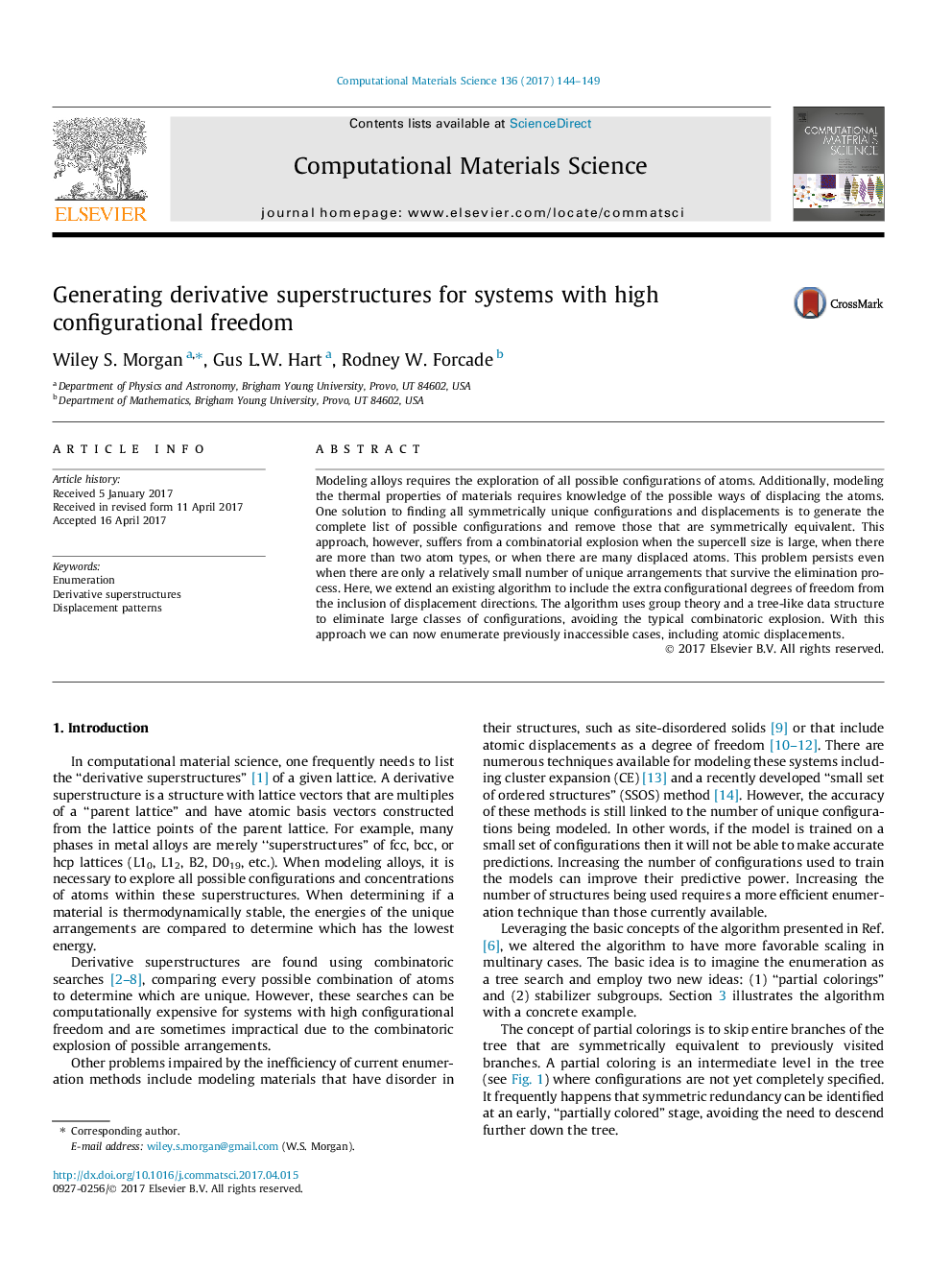| Article ID | Journal | Published Year | Pages | File Type |
|---|---|---|---|---|
| 5453607 | Computational Materials Science | 2017 | 6 Pages |
Abstract
Modeling alloys requires the exploration of all possible configurations of atoms. Additionally, modeling the thermal properties of materials requires knowledge of the possible ways of displacing the atoms. One solution to finding all symmetrically unique configurations and displacements is to generate the complete list of possible configurations and remove those that are symmetrically equivalent. This approach, however, suffers from a combinatorial explosion when the supercell size is large, when there are more than two atom types, or when there are many displaced atoms. This problem persists even when there are only a relatively small number of unique arrangements that survive the elimination process. Here, we extend an existing algorithm to include the extra configurational degrees of freedom from the inclusion of displacement directions. The algorithm uses group theory and a tree-like data structure to eliminate large classes of configurations, avoiding the typical combinatoric explosion. With this approach we can now enumerate previously inaccessible cases, including atomic displacements.
Keywords
Related Topics
Physical Sciences and Engineering
Engineering
Computational Mechanics
Authors
Wiley S. Morgan, Gus L.W. Hart, Rodney W. Forcade,
